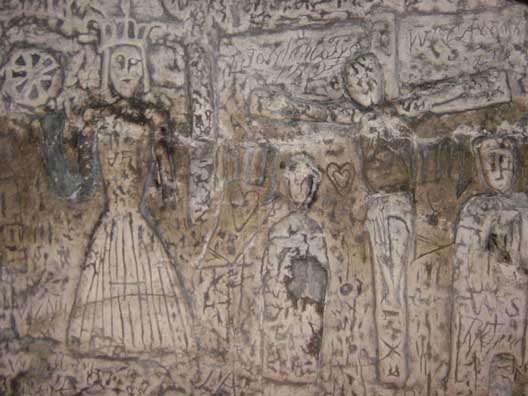
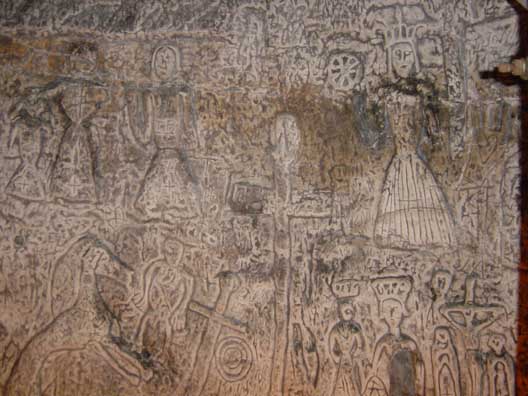
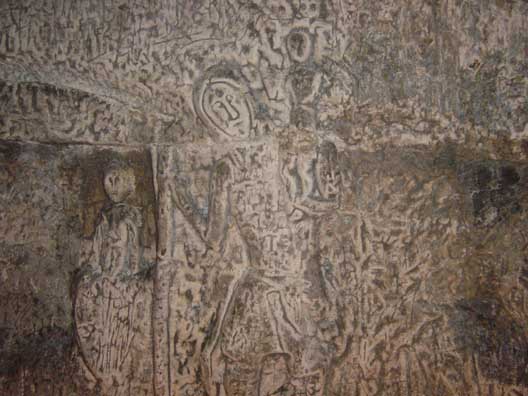
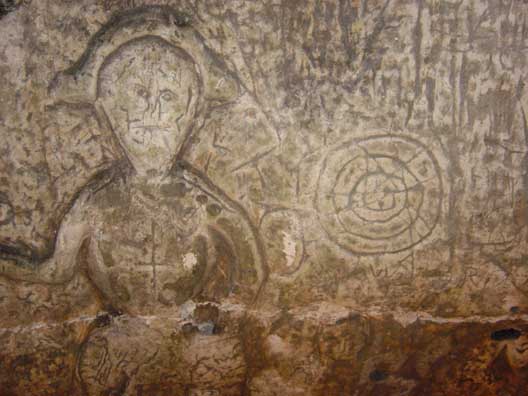

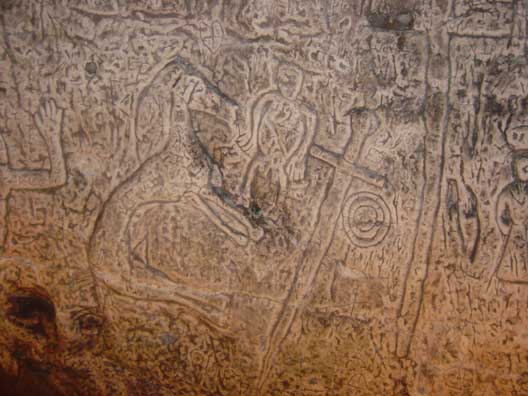
Royston (Iceni) Weather Station
Royston Cave....centuries of refuge from the weather?
In August 1742 workmen erecting a bench in the butter market in the Mercat House in Royston discovered the Cave by accident when they found a millstone in the ground. When the millstone was lifted it revealed a well-like shaft about 0.6m in diameter and 4.8m deep. Further examination disclosed that the Cave was more than half filled with earth and sundry 'debris'.
The Cave is a bell shaped man-made chamber cut in the chalk strata on which the town of Royston is built. It is 5.2m in diameter and almost 7.7m high, and believed to date from the early 14th Century. It is thought to be the work of the Knights Templar, a powerful religious and military order of 'warrior monks' based in Jerusalem. Although the the Cave itself has no resemblance to any other known structure its floor plan appears to be based on that of the Islamic shrine, the Dome of the Rock, a building that was close to the Templar headquarters in Jerusalem. The Cave is listed Grade 1 by English Heritage.
An intriguing feature of the Cave is that the lower cylindrical part (about 3m high) is decorated with medieval carvings. Some examples of these carvings are shown below, as photographed on 24th February 2005.
Although the Cave may have provided an underground refuge from the weather it was almost certainly not hewn in the chalk for this use! Research suggests that it was used for ritualistic purposes, primarily initiation ceremonies by the Knights Templar. The temperature in the Cave is remarkably uniform throughout the year, varying from about 10°C in Winter to 13°C at the end of the Summer. Temperature and humidity sensors have been installed in the Cave to log these elements in order to keep a check on conditions for the Cave's future well being. Comparison is made between these observations and those outside as recorded at Royston (Iceni) Weather Station.
 |
 |
 |
 |
 |
 |
Return to Welcome to Royston (Iceni) Weather Station page
(This page last updated 24th March 2005 2019 GMT)